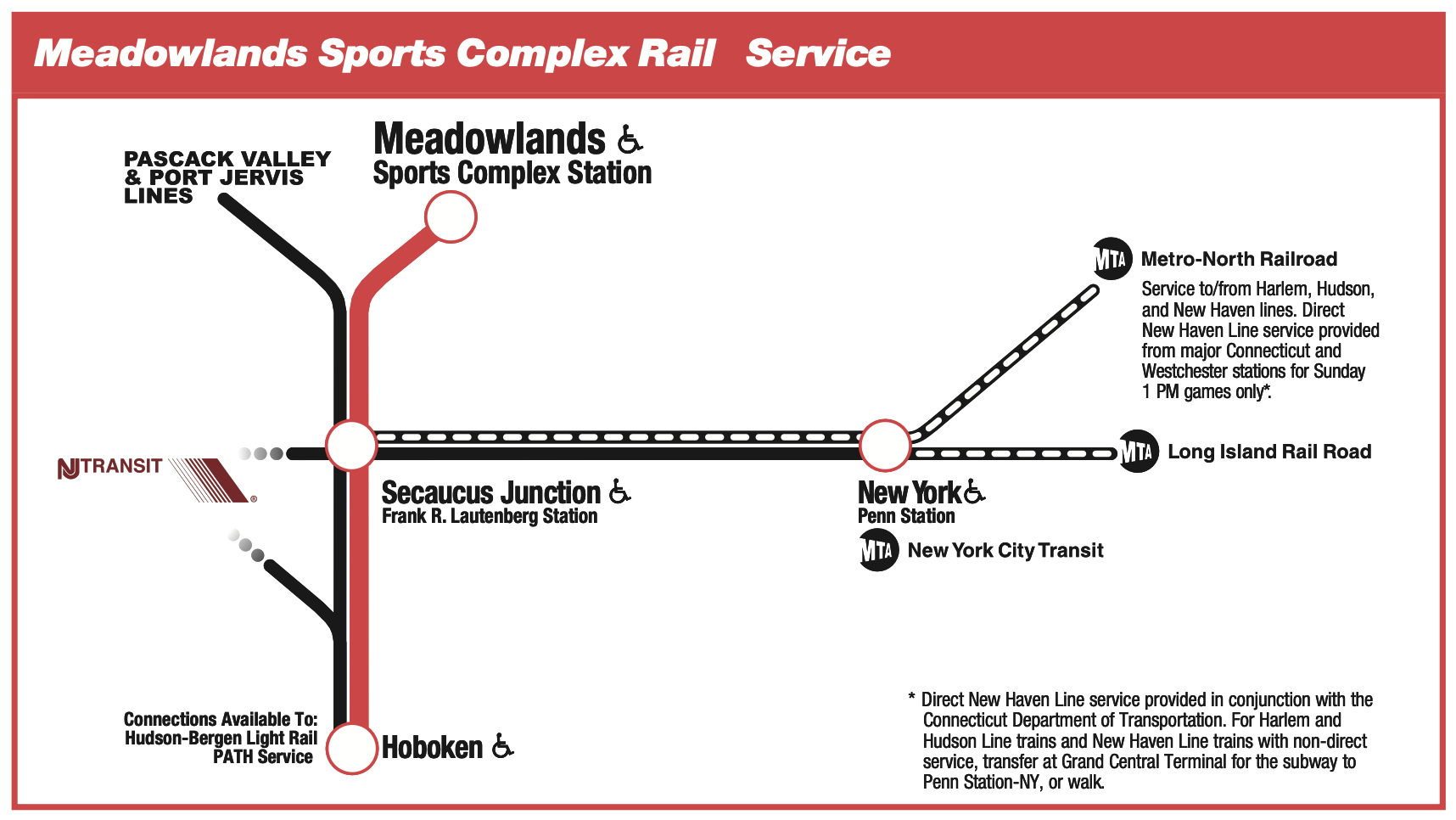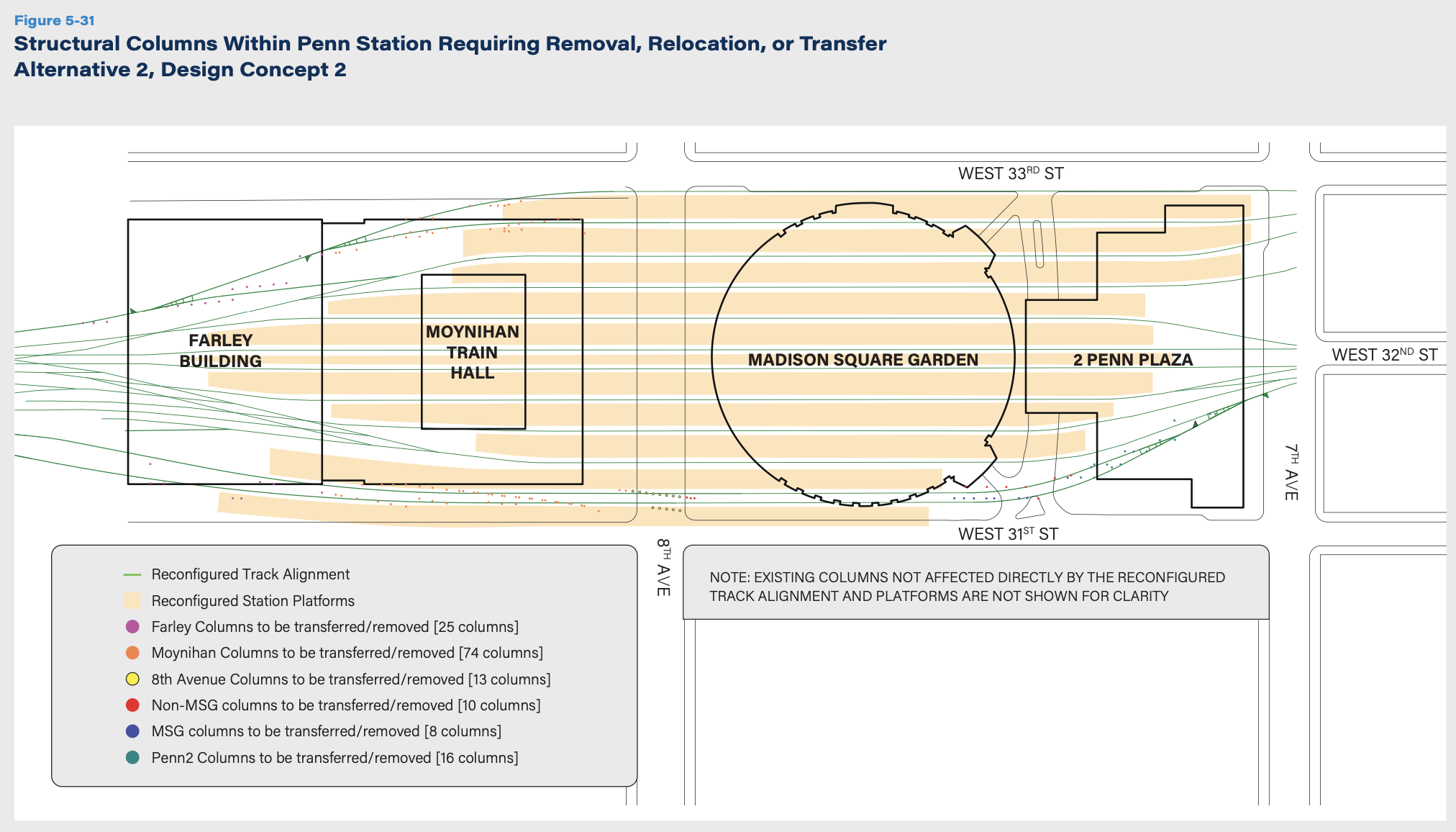A Study That Preempts Real Alternatives
Amtrak, the MTA, and NJ Transit’s Doubling Trans-Hudson Capacity Feasibility Study, released in October 2024, claims to evaluate options for expanding Penn Station. In reality, it sets the stage for a $16.7 billion stub-end expansion, shutting down serious consideration of through-running. By rushing this design to the 10% stage, these agencies create the illusion that a more forward-thinking, cross-Hudson rail service is unworkable. This hasty move risks locking the region into a massive, inefficient capital project that doubles down on the very problems it claims to solve.
The Proof Already Exists
The idea that through-running is impossible contradicts both historical evidence and real-world experience. The Meadowlands Football Train Service, which ran until 2017, showed that trains could travel seamlessly from Connecticut to New Jersey through Penn Station. The service had flaws, but it proved that interagency coordination was possible.
Yet this proof-of-concept is nowhere to be found in the current narrative. The agencies ignore it, conveniently burying the fact that such service once existed. Instead, they paint through-running as unworkable, citing exaggerated structural hurdles—like the claim that 1,045 columns would need to be relocated. Even their own study contradicts this: Design Concept 2 achieves through-running by modifying just 146 columns, a challenge well within the scope of standard engineering practice. London’s Thameslink transformation faced similar skepticism but succeeded through careful planning and phased execution.
Manipulating the Narrative
This isn’t just about engineering. The political shift behind the station expansion plan is just as revealing. The Regional Plan Association (RPA), once a champion of through-running, now echoes the official line that structural constraints make it impossible. Critics point to Amtrak’s funding of the RPA as a likely reason for this change in stance. A decade ago, RPA leaders recognized through-running as a practical solution to Penn Station’s capacity crisis. Now, that perspective has conveniently disappeared.
Meanwhile, the feasibility study barely acknowledges the long-term benefits of through-running: more seamless travel, reduced reliance on cars, economic development, and a more efficient regional network. Instead, it promotes an expansion that adds platform space but forces trains to keep reversing direction, preserving Penn Station’s fundamental inefficiency. The commitment of design funds to this single outcome creates an air of inevitability, sidelining all alternatives.
A Rushed, Rigged Process
The speed of this process is another red flag. The agencies formed a Station Working Advisory Group, claiming to invite diverse input—yet the feasibility study declaring through-running “unworkable” appeared almost immediately. The timing suggests a predetermined conclusion, not an open evaluation.
This pattern is familiar. Major cross-Hudson projects have repeatedly been derailed by short-term political decisions and internal turf wars. What starts as a call for bold solutions often collapses into bureaucratic infighting and financial maneuvering. The real question is whether the required NEPA review will be a genuine analysis or a rubber stamp for the agencies’ preferred plan.
Through-running advocates warn that the region is about to spend billions on a project that cements an outdated operating model for decades—one that will be politically and financially difficult to undo. The feasibility study may present itself as an objective analysis, but in reality, it serves a narrow coalition of planners and funders pushing a single concept past the point of no return.
The Cost of Doing Nothing
New York’s transit system remains Balkanized, with each agency guarding its own turf. Despite endless talk about regional integration, the reality is that travelers still face disjointed, inefficient commutes. A Brooklyn-to-Newark Airport trip, for example, requires navigating multiple agencies with unaligned schedules and separate fares—problems that a unified system would resolve.
Other major cities have solved this. Paris and London have integrated their commuter rail networks, creating seamless, high-capacity transit corridors. New York, by contrast, remains stuck in an outdated mindset, where agencies prioritize their own interests over the needs of the region.
A decade ago, leading planners recognized that through-running wasn’t about linking specific suburbs—it was about transforming Penn Station into a true regional hub. But today, that argument has been abandoned in favor of a politically expedient expansion.
If this expansion moves forward without serious reconsideration, the region will have missed a once-in-a-generation opportunity to fix Penn Station the right way. Once the NEPA scope is set, there may be little room left to explore incremental solutions that could deliver real benefits without the cost and disruption of an enormous stub-end addition.
The public deserves a real debate, not a predetermined outcome disguised as an objective study. That means reexamining phased construction options, acknowledging the operational savings of through-running, and recognizing that past pilot programs—however brief—already proved that cross-agency cooperation is possible.
The question is not whether trains can run through Penn Station. They already have. The question is whether the agencies shaping New York’s transit future have the will to break free from institutional inertia and pursue a solution that truly serves the region.
Penn Station’s expansion must not be another monument to short-sighted planning. The best way forward is not to build more of the same—it’s to finally allow the system to function as it should: seamlessly, efficiently, and without artificial barriers.
** [Build Gateway Now Coalition – The Regional Plan Association launched the Build Gateway Now Coalition five years ago, bringing together over 40 civic, business and labor partners to support the nation’s most critical infrastructure project: the Gateway Program. Through original research, communication efforts (social media, op/eds, digital public engagement tools, regular contact with the media), advocacy efforts (testifying at Gateway Development Commission Board meetings, lobbying in Washington DC, hosting press conferences and other rallies), our coalition has helped move the project along and made it clear in the public eye that the Gateway Program must be built. Our work is supported by Amtrak. We received a $350,000 grant for 18 months starting January 2022. Our grant was recently renewed and increasedby $500,000 for 18 months beginning January 2024.]
Regional Plan Association, Inc. (2023). Form 990: Return of Organization Exempt from Income Tax. Internal Revenue Service.




One Response
XtEC fuiKbs RIDMGA VFJdYC jzt QbCPTGQ SeTqvha